A Unique Isolation of a Lytic Bacteriophage Infected Bacillus anthracis Isolate from Pafuri, South Africa
Abstract
1. Introduction
2. Materials and Methods
2.1. Isolation
2.2. Viral Precipitation
2.3. Transmission Electron Micrograph
2.4. The Effect of Viral Propagation on B. anthracis DS201579
2.5. High-Throughput Sequencing
2.5.1. Bioinformatics Analysis
2.5.2. Nucleotide Sequence Accession Numbers
3. Results
3.1. Isolation
3.2. Transmission Electron Micrograph
3.3. The Effect of Viral Propagation on B. anthracis DS201579
3.4. Genomic Features of Bacillus Anthracis DS201579
Genomic Features of Bacillus Phage Crookii
4. Discussion
5. Conclusions
Supplementary Materials
Author Contributions
Funding
Acknowledgments
Conflicts of Interest
Appendix A

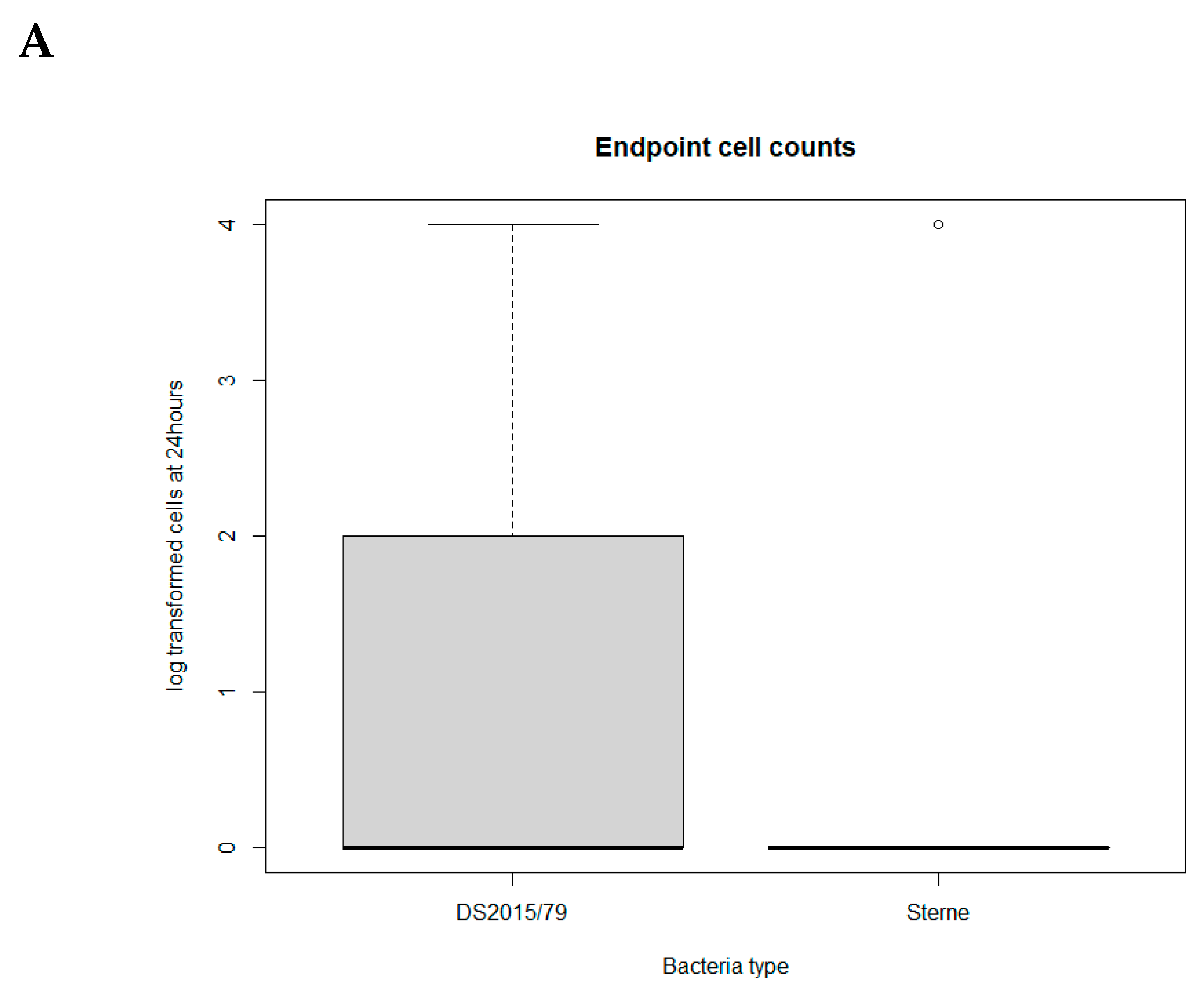
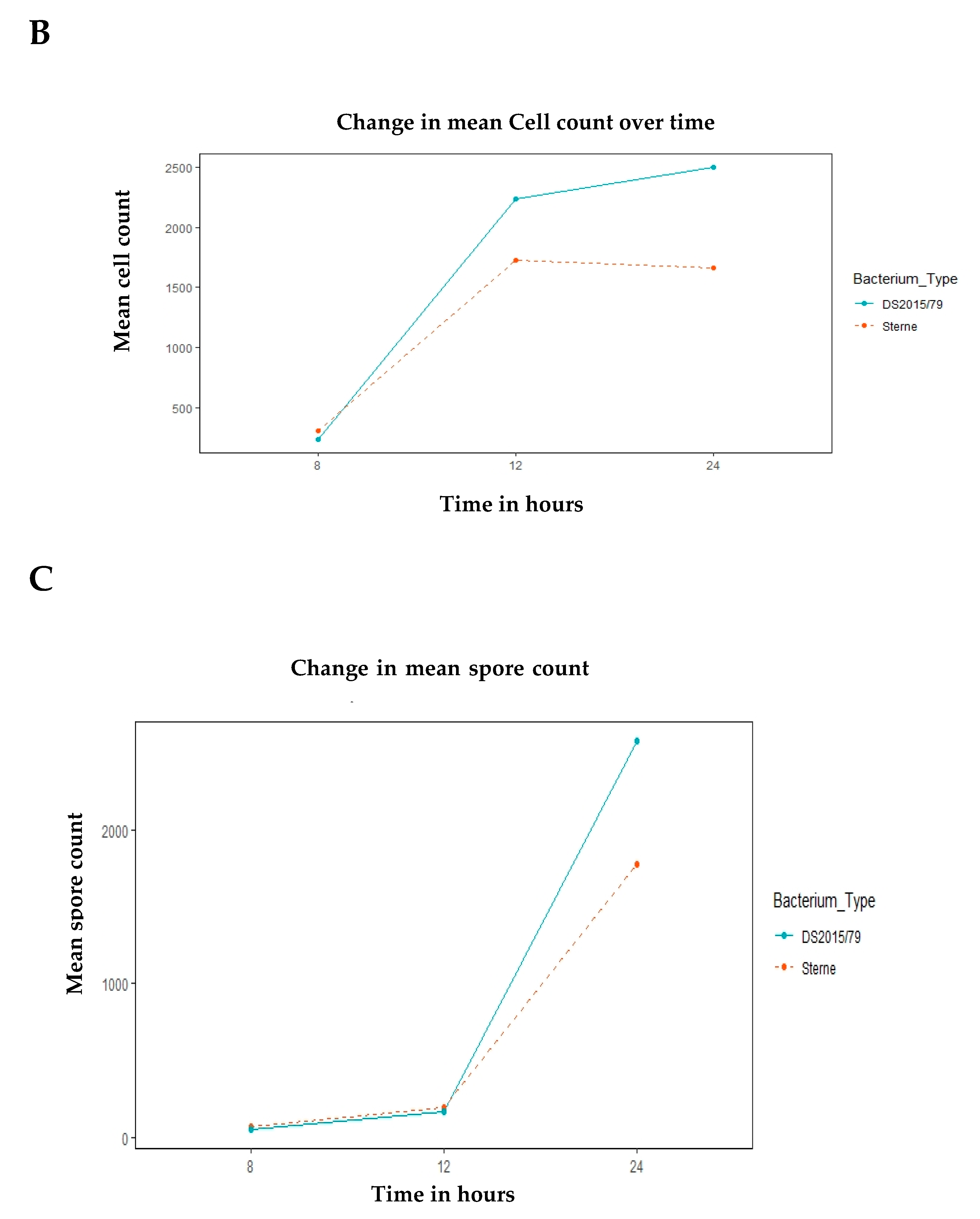
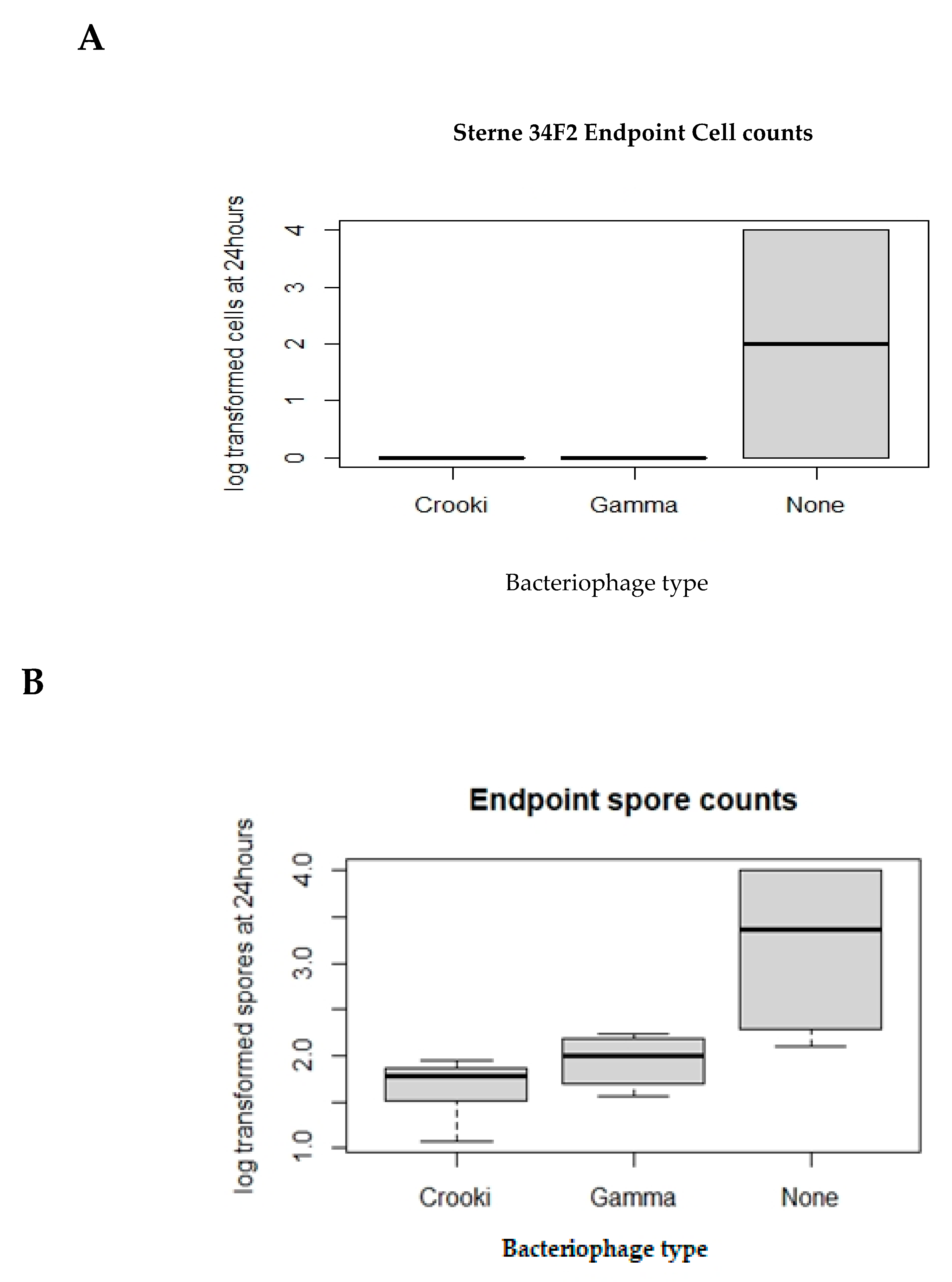
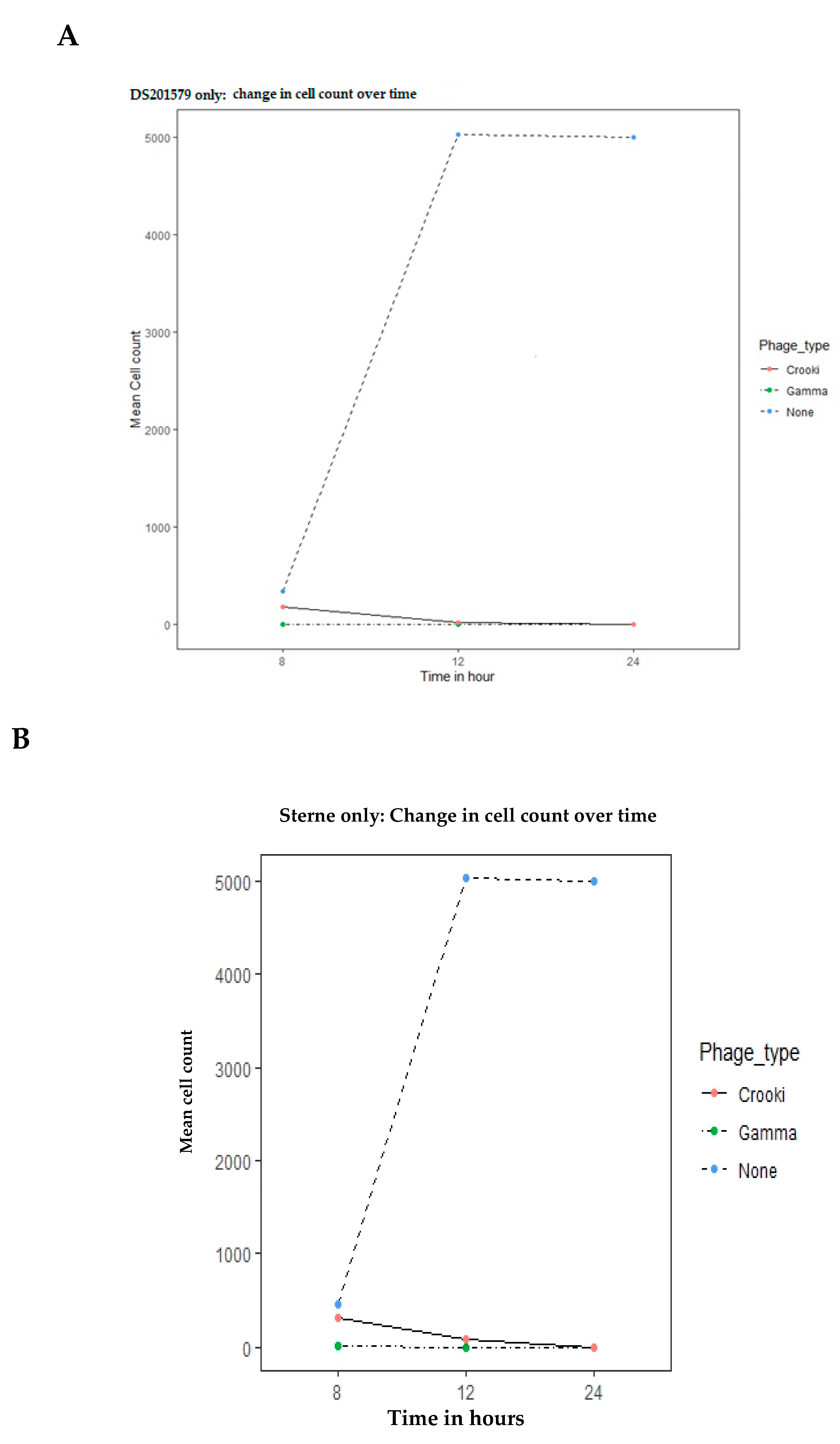

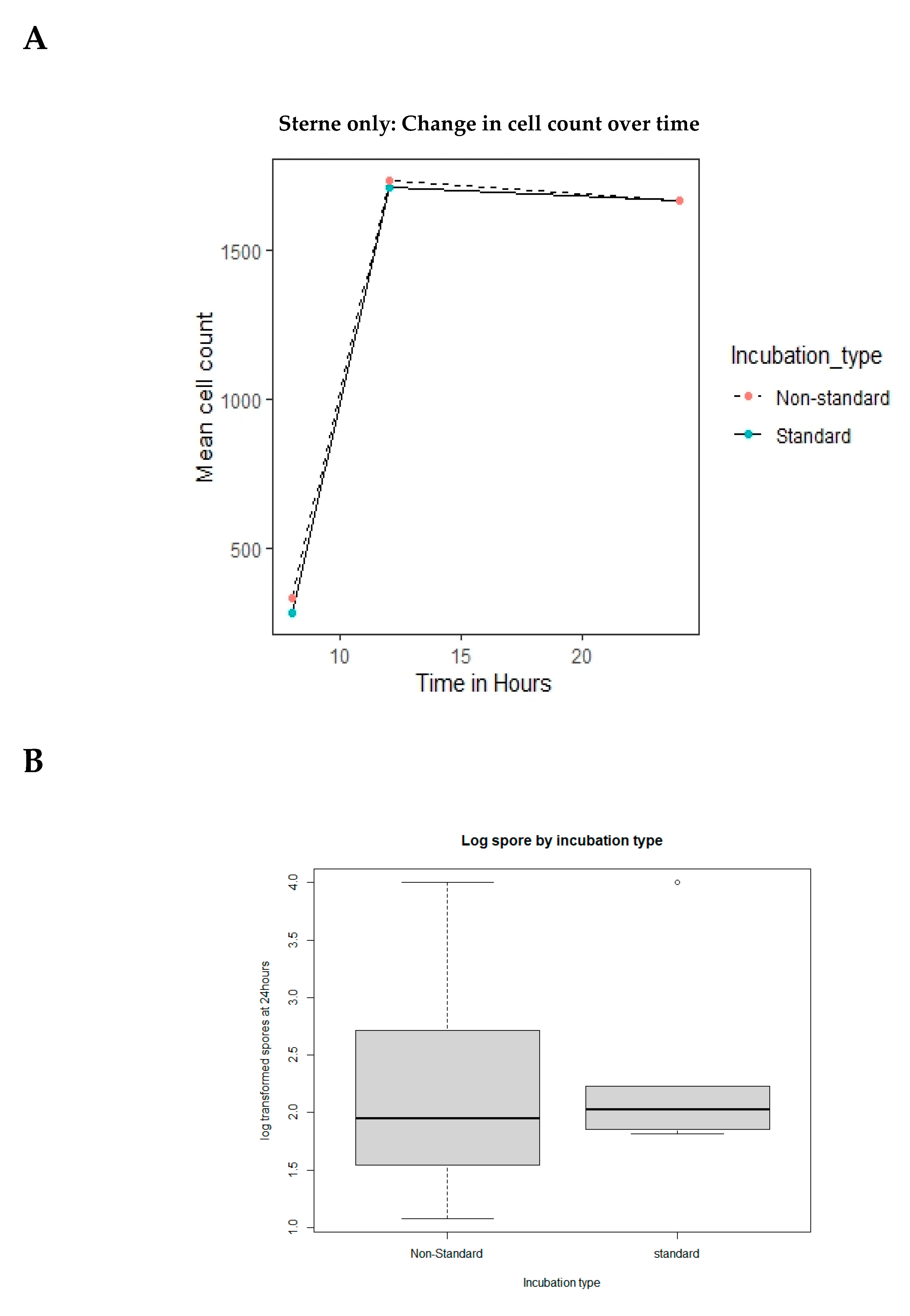
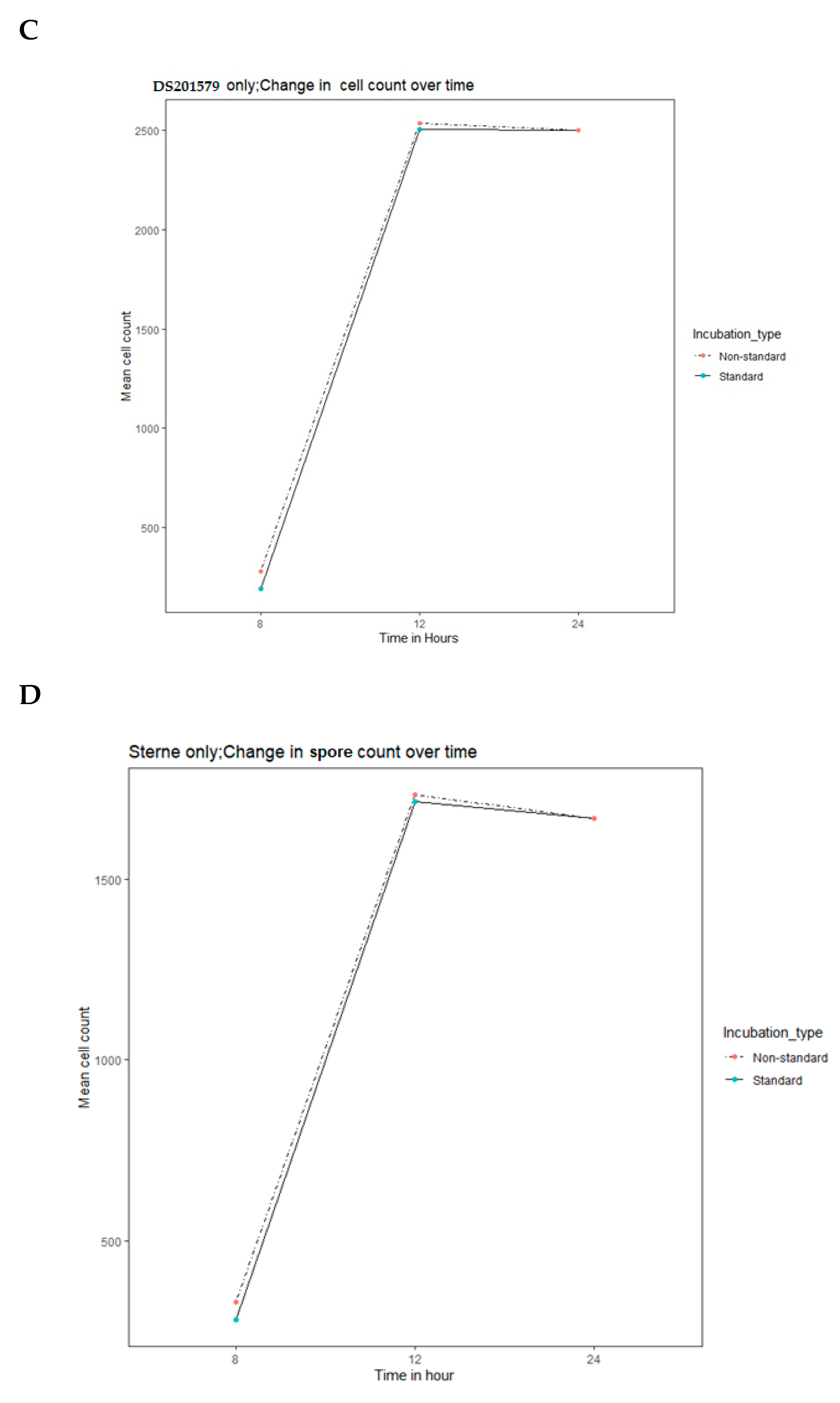
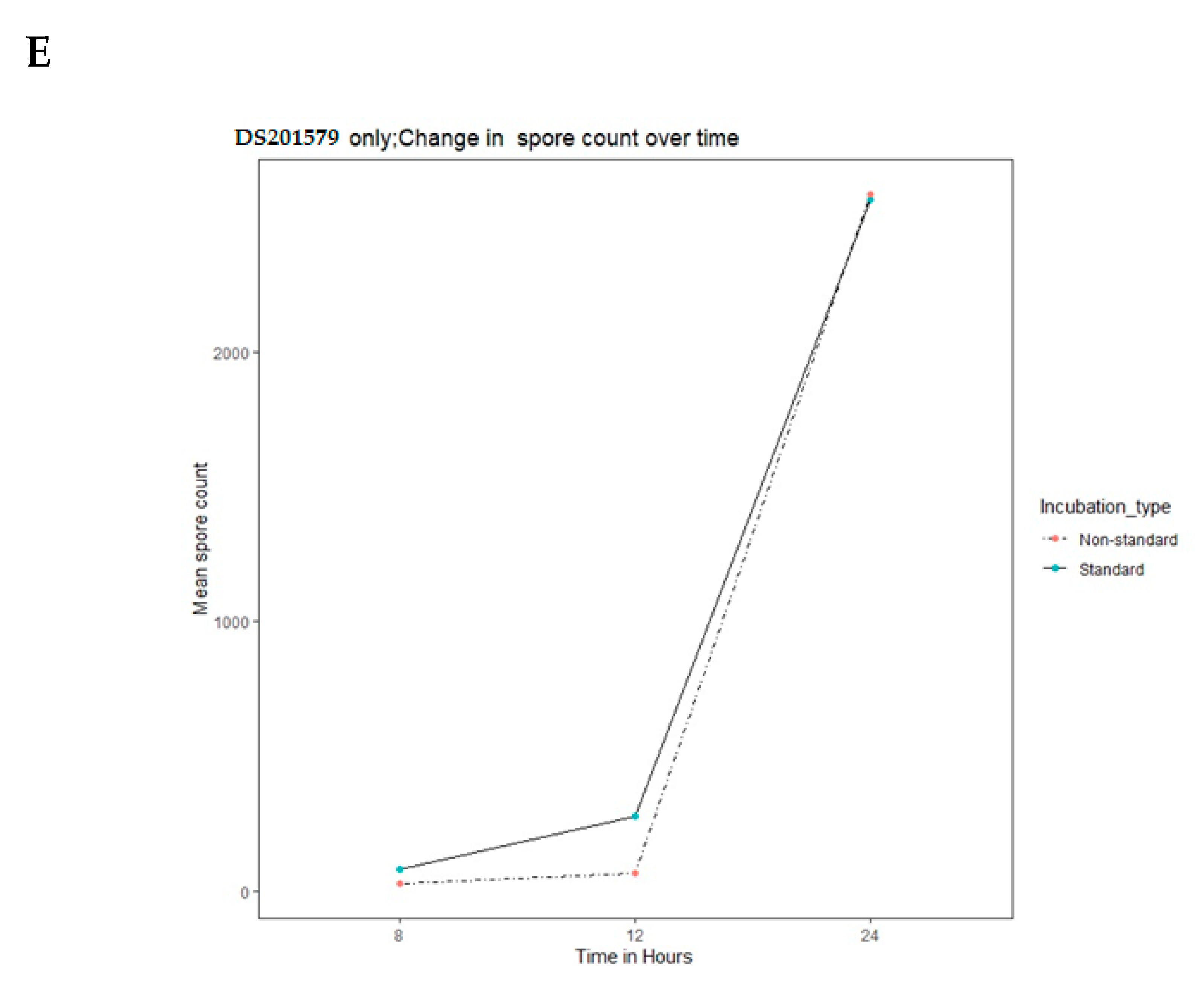


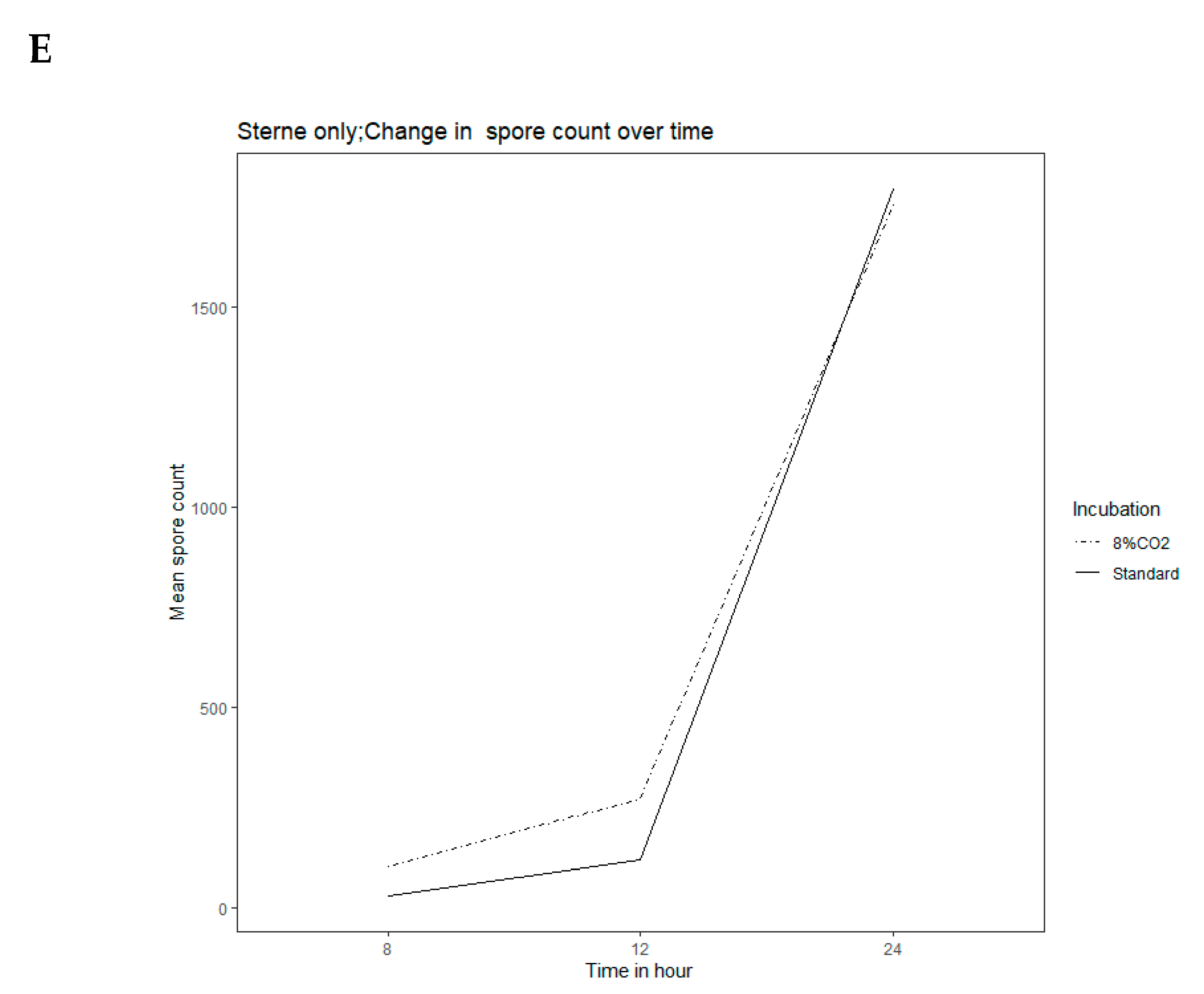
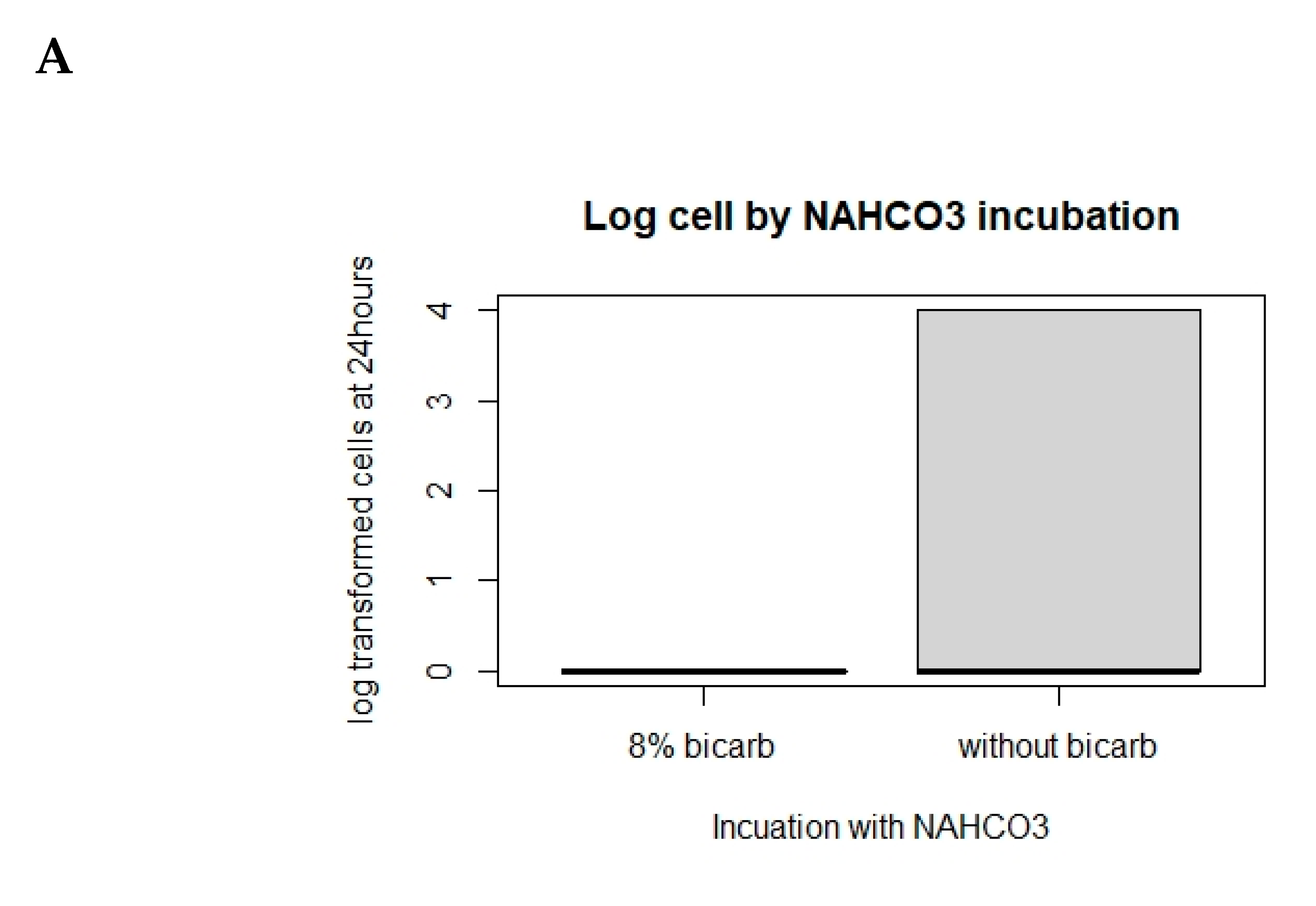
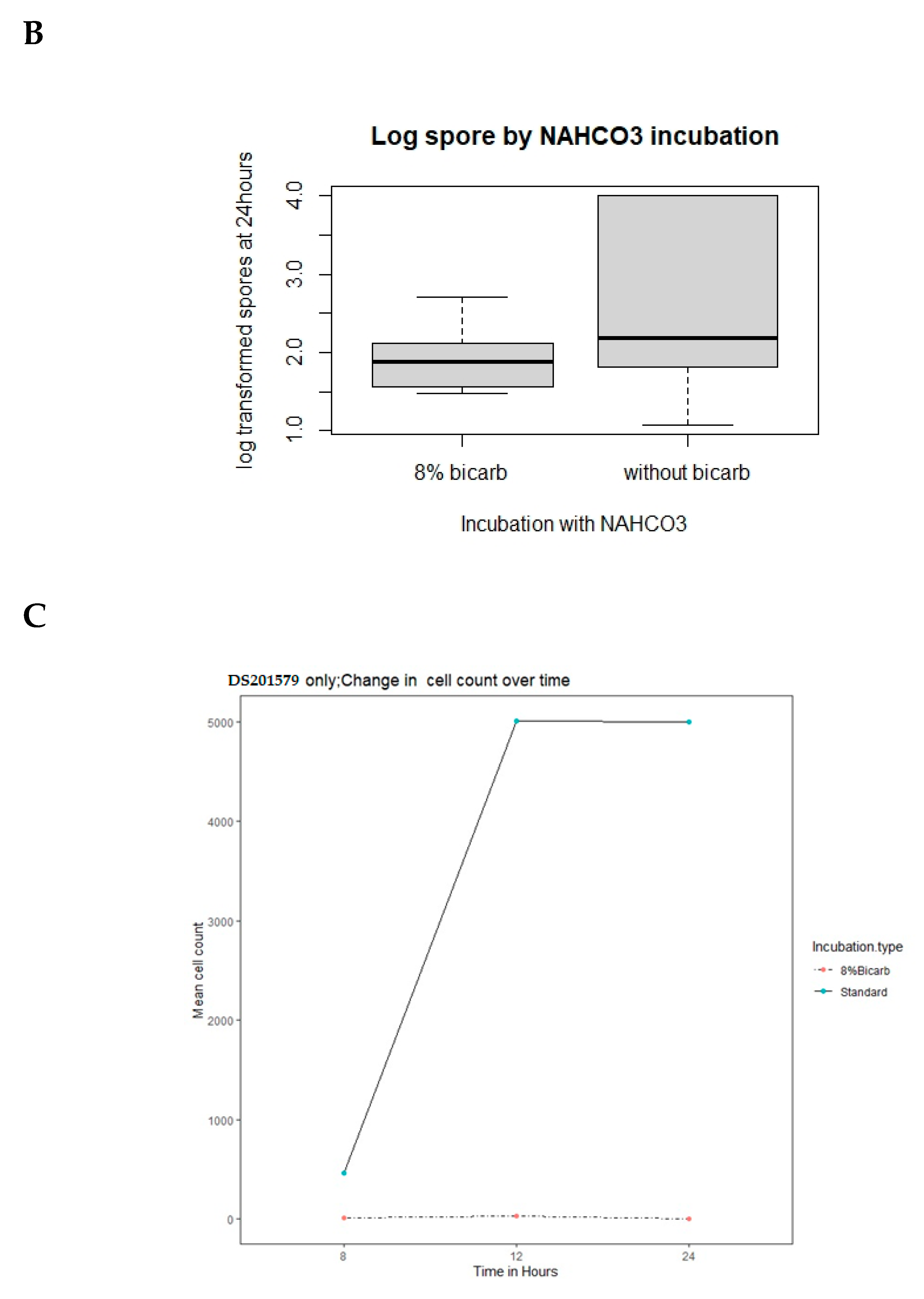

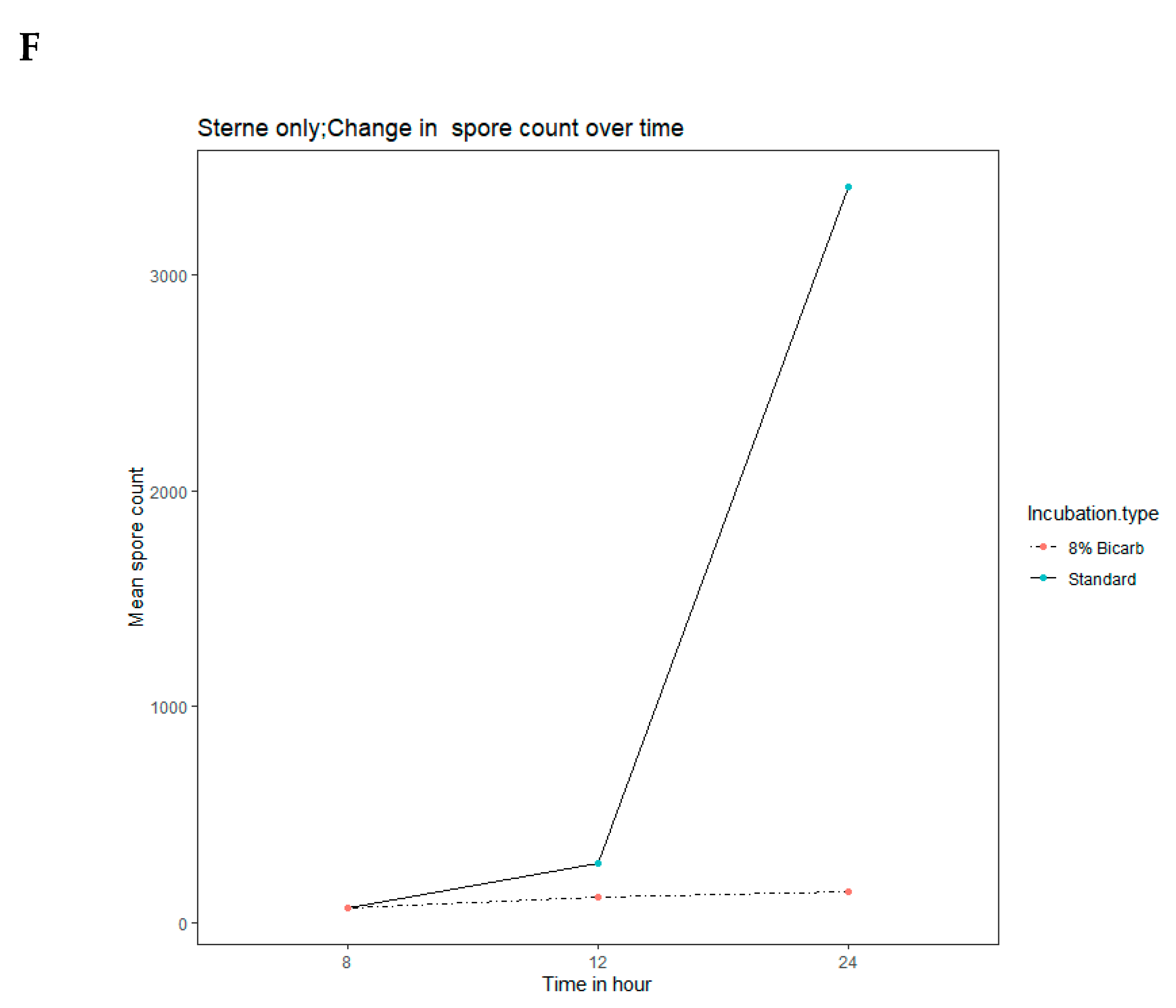
References
- Sterne, M. Variation in Bacillus anthracis. Onderstepoort J. Vet. Res. 1937, 8, 271–349. [Google Scholar]
- Turnbull, P.C.B. Anthrax in Humans and Animals; World Health Organization: Geneva, Switzerland, 2008. [Google Scholar]
- Bengis, R. An update on anthrax in wildlife in the Kruger National Park. In Proceedings of the 49th Annual Wildlife Diseases Association Conference, Orlando, FL, USA, 4 June 2000. [Google Scholar]
- Bengis, R.; Grant, R.; De Vos, V. Wildlife diseases and veterinary controls: A savanna ecosystem perspective. In The Kruger Experience: Ecology and Management of Savanna Heterogeneity; Island Press: Washington, DC, USA, 2003; pp. 349–369. [Google Scholar]
- De Vos, V.; Turnbull, P.C.B. Anthrax. In Infectious Diseases of Livestock, 3rd ed.; Coetzer, J.A.W., Tustin, R.C., Eds.; Oxford Univ. Press: Cape Town, South Africa, 2004; pp. 1788–1811. [Google Scholar]
- De Vos, V.; Van Rooyen, G.L.; Kloppers, J.J. Anthrax immunization of free ranging roan antelope Hippotragus equinus in Kruger National Park. Koedoe 1973, 16, 11–25. [Google Scholar] [CrossRef]
- Odendaal, M.W.; Pieterson, P.M.; De Vos, V.; Botha, A.D. The antibiotic sensitivity patterns of Bacillus anthracis isolated from the Kruger National Park. Onderstepoort J. Vet. Res. 1991, 58, 17–19. [Google Scholar] [PubMed]
- Hoffmaster, A.R.; Ravel, J.; Rasko, D.A.; Chapman, G.D.; Chute, M.D.; Marston, C.K.; De, B.K.; Sacchi, C.T.; Fitzgerald, C.; Mayer, L.W.; et al. Identification of anthrax toxin genes in a Bacillus cereus associated with an illness resembling inhalation anthrax. Proc. Natl. Acad. Sci. USA 2004, 101, 8449–8454. [Google Scholar] [CrossRef]
- Klee, S.R.; Brzuszkiewicz, E.B.; Nattermann, H.; Bruggemann, H.; Dupke, S.; Wollherr, A.; Franz, T.; Pauli, G.; Appel, B.; Liebl, W.; et al. The genome of a Bacillus isolate causing anthrax in chimpanzees combines chromosomal properties of B. cereus with B. anthracis virulence plasmids. PLoS ONE 2010, 5, e10986. [Google Scholar] [CrossRef]
- Papazisi, L.; Rasko, D.A.; Ratnayake, S.; Bock, G.R.; Remortel, B.G.; Appalla, L.; Liu, J.; Dracheva, T.; Braisted, J.C.; Shallom, S.; et al. Investigating the genome diversity of B. cereus and evolutionary aspects of B. anthracis emergence. Genomics 2011, 98, 26–39. [Google Scholar] [CrossRef]
- Leppla, S.H. Anthrax toxin edema factor: A bacterial adenylate cyclase that increases cyclic AMP concentrations of eukaryotic cells. Proc. Natl. Acad. Sci. USA 1982, 79, 3162–3166. [Google Scholar] [CrossRef]
- Park, S.; Leppla, S.H. Optimized production and purification of Bacillus anthracis lethal factor. Protein Expr. Purif. 2000, 18, 293–302. [Google Scholar] [CrossRef]
- Green, B.; Battisti, L.; Koehler, T.; Thorne, C.; Ivins, B. Demonstration of a capsule plasmid in Bacillus anthracis. Infect. Immun. 1985, 49, 291–297. [Google Scholar] [CrossRef]
- Sozhamannan, S.; Chute, M.D.; Mcafee, F.D.; Fouts, D.E.; Akmal, A.; Galloway, D.R.; Mateczun, A.; Baillie, L.W.; Read, T.D. The Bacillus anthracis chromosome contains four conserved, excision-proficient, putative prophages. BMC Microbiol. 2006, 6, 34. [Google Scholar] [CrossRef]
- Pienaar, U.D.V. ‘N uitbraak van Miltsiekteonder wild in die Nasionale Kruger wildtuin. Koedoe 1960, 3, 238–251. [Google Scholar] [CrossRef]
- Smith, K.L.; Devos, V.; Bryden, H.; Price, L.B.; Hugh-Jones, M.E.; Keim, P. Bacillus anthracis diversity in Kruger National Park. J. Clin. Microbiol. 2000, 38, 3780–3784. [Google Scholar] [CrossRef] [PubMed]
- Saile, E.; Koehler, T.M. Bacillus anthracis multiplication, persistence, and genetic exchange in the rhizosphere of grass plants. Appl. Environ. Microbiol. 2006, 72, 3168–3174. [Google Scholar] [CrossRef]
- Schuch, R.; Fischetti, V.A. The secret life of the anthrax agent Bacillus anthracis: Bacteriophage-mediated ecological adaptations. PLoS ONE 2009, 4, e6532. [Google Scholar] [CrossRef]
- Van Ness, G.B. Ecology of anthrax. Science 1971, 172, 1303–1307. [Google Scholar] [CrossRef] [PubMed]
- Lee, K.; Costerton, J.W.; Ravel, J.; Auerbach, R.K.; Wagner, D.M.; Keim, P.; Leid, J.G. Phenotypic and functional characterization of Bacillus anthracis biofilms. Microbiology 2007, 153, 1693–1701. [Google Scholar] [CrossRef][Green Version]
- Ackermann, H.-W.; Audurier, A.; Berthiaume, L.; Jones, L.A.; Mayo, J.A.; Vidaver, A.K. Guidelines for bacteriophage characterization. Adv. Virus Res. 1978, 23, 1–24. [Google Scholar]
- Ackermann, H.-W.; Azizbekyan, R.; Bernier, R.; De Barjac, H.; Saindoux, S.; Valéro, J.-R.; Yu, M.-X. Phage typing of Bacillus subtilis and B. thuringiensis. Res. Microbiol. 1995, 146, 643–657. [Google Scholar] [CrossRef]
- Ackermann, H.W. Bacteriophage taxonomy. Microbiol. Aust. 2011, 32, 90–94. [Google Scholar] [CrossRef]
- Cowles, P.B. A bacteriophage for B. anthracis. J. Bacteriol. 1931, 21, 161. [Google Scholar] [CrossRef]
- Bertani, G. Studies on Lysogenesis I.: The Mode of Phage Liberation by Lysogenic Escherichia coli 1. J. Bacterial. 1951, 62, 293. [Google Scholar] [CrossRef]
- Hargreaves, K.R.; Kropinski, A.M.; Clokie, M.R.J. Bacteriophage behavioral ecology: How phages alter their bacterial host’s habits. Bacteriophage 2014, 4, e29866. [Google Scholar] [CrossRef] [PubMed]
- Adams, M.H. Bacteriophages. In Bacteriophages; Interscience Publ, Inc.: New York, NY, USA, 1959; pp. 352–353. [Google Scholar]
- Letarov, A.; Kulikov, E. The bacteriophages in human- and animal body-associated microbial communities. J. Appl. Microbiol. 2009, 107, 1–13. [Google Scholar] [CrossRef] [PubMed]
- Fouts, D.E.; Rasko, D.A.; Cer, R.Z.; Jiang, L.; Fedorova, N.B.; Shvartsbeyn, A.; Vamathevan, J.J.; Tallon, L.; Althoff, R.; Arbogast, T.S.; et al. Sequencing Bacillus anthracis typing phages gamma and cherry reveals a common ancestry. J. Bacteriol. 2006, 188, 3402–3408. [Google Scholar] [CrossRef]
- Sulakvelidze, A.; Morris, J.G.; Alavidze, Z.; Pasternack, G.R.; Brown, T.C. Method and Device for Sanitation Using Bacteriophages. U.S. Patent 6,699,701, 2 March 2004. [Google Scholar]
- Walmagh, M.; Briers, Y.; Dos Santos, S.B.; Azeredo, J.; Lavigne, R. Characterization of modular bacteriophage endolysins from Myoviridae phages OBP, 201phi2-1 and PVP-SE1. PLoS ONE 2012, 7, e36991. [Google Scholar] [CrossRef]
- Demay, R.M. Practical Principles of Cytopathology; ASCP Press: Chicago, IL, USA, 1999; p. 213. [Google Scholar]
- Kropinski, A.M.; Mazzocco, A.; Waddell, T.E.; Lingohr, E.; Johnson, R.P. Enumeration of bacteriophages by double agar overlay plaque assay. In Bacteriophages: Methods and Protocols, Volume 1: Isolation, Characterization, and Interactions; Humana Press: Totowa, NJ, USA, 2009; pp. 69–76. [Google Scholar]
- Høyland-Kroghsbo, N.M.; Mærkedahl, R.B.; Svenningsen, S.L. A quorum-sensing-induced bacteriophage defense mechanism. MBio 2013, 4, e00362-12. [Google Scholar] [CrossRef]
- Koehler, T.M. Bacillus anthracis Physiology and Genetics. Mol. Asp. Med. 2009, 30, 386–396. [Google Scholar] [CrossRef]
- R Core Team. R: A language and environment for statistical computing; R Foundation for Statistical Computing: Vienna, Austria, 2017; Available online: http://www.R-project.org/ (accessed on 13 May 2020).
- Wilson, K. Preparation of genomic DNA from bacteria. Curr. Protoc. Mol. Biol. 1987, 56, 2–4. [Google Scholar] [CrossRef]
- Boom, R.; Sol, C.; Salimans, M.; Jansen, C.; Wertheim-Van Dillen, P.; Van Der Noordaa, J. Rapid and simple method for purification of nucleic acids. J. Clin. Microbiol. 1990, 28, 495–503. [Google Scholar] [CrossRef]
- Andrews, S. FastQC: A Quality Control Tool for High throughput Sequence Data. Reference Source. 2010. Available online: http://www.bioinformatics.babraham.ac.uk/projects/fastqc (accessed on 15 April 2020).
- Altschul, S.F.; Gish, W.; Miller, W.; Myers, E.W.; Lipman, D.J. Basic local alignment search tool. J. Mol. Biol. 1990, 215, 403–410. [Google Scholar] [CrossRef]
- Darling, A.C.; Mau, B.; Blattner, F.R.; Perna, N.T. Mauve: Multiple alignment of conserved genomic sequence with rearrangements. Genome Res. 2004, 14, 1394–1403. [Google Scholar] [CrossRef] [PubMed]
- Arndt, D.; Grant, J.; Marcu, A.; Sajed, T.; Pon, A.; Liang, Y.; Wishart, D.S. PHASTER: A better, faster version of the PHAST phage search tool. Nucleic Acids Res. 2016, 44, W16–W21. [Google Scholar] [CrossRef] [PubMed]
- Grant, J.R.; Stothard, P. The CGView Server: A comparative genomics tool for circular genomes. Nucleic Acids Res. 2008, 36, W181–W184. [Google Scholar] [CrossRef] [PubMed]
- Katoh, K.; Standley, D.M. MAFFT multiple sequence alignment software version 7: Improvements in performance and usability. Mol. Biol. Evol. 2013, 30, 772–780. [Google Scholar] [CrossRef]
- Kumar, S.; Stecher, G.; Tamura, K. MEGA7: Molecular Evolutionary Genetics Analysis version 7.0. Mol. Biol. Evol. 2016, 33, 1870–1874. [Google Scholar] [CrossRef]
- Zhao, Y.; Wu, J.; Yang, J.; Sun, S.; Xiao, J.; Yu, J. PGAP: Pan-genomes analysis pipeline. Bioinformatics 2012, 28, 416–418. [Google Scholar] [CrossRef]
- Aziz, R.K.; Bartels, D.; Best, A.A.; Dejongh, M.; Disz, T.; Edwards, R.A.; Formsma, K.; Gerdes, S.; Glass, E.M.; Kubal, M. The RAST Server: Rapid annotations using subsystems technology. BMC Genom. 2008, 9, 75. [Google Scholar] [CrossRef]
- Brown, E.R.; Cherry, W.B. Specific identification of Bacillus anthracis by means of a variant bacteriophage. J. Infect. Dis. 1955, 96, 34–39. [Google Scholar] [CrossRef]
- Sirard, J.-C.; Mock, M.; Fouet, A. The three Bacillus anthracis toxin genes are co-ordinately regulated by bicarbonate and temperature. J. Bacteriol. Res. 1994, 176, 5188–5192. [Google Scholar] [CrossRef]
- Klumpp, J.; Beyer, W.; Loessner, M.J. Direct Submission of Bacillus Phage W.Ph., Complete Genome; Acession: NC_016563; National Center for Biotechnology Information: Bethesda, MD, USA, 2012. [Google Scholar]
- Klumpp, J.; Schmuki, M.; Sozhamannan, S.; Beyer, W.; Fouts, D.E.; Bernbach, V.; Calendar, R.; Loessner, M.J. The odd one out: Bacillus ACT bacteriophage CP-51 exhibits unusual properties compared to related Spounavirinae W.Ph. and Bastille. Virology 2014, 462, 299–308. [Google Scholar] [CrossRef]
- Sonenshein, A.L.; Roscoe, D.H. The course of phage ∅e infection in sporulating cells of Bacillus subtilis strain 3610. Virology 1969, 39, 265–276. [Google Scholar] [CrossRef]
- Cowles, P.B. The recovery of bacteriophage from filtrates derived from heated spore-suspensions. J. Bacteriol. 1931, 22, 119. [Google Scholar] [CrossRef] [PubMed]
- Takahashi, I. Incorporation of bacteriophage genome by spores of Bacillus subtilis. J. Bacteriol. Res. 1964, 87, 1499–1502. [Google Scholar] [CrossRef]
- Tait, K.; Skillman, L.; Sutherland, I. The efficacy of bacteriophage as a method of biofilm eradication. Biofouling 2002, 18, 305–311. [Google Scholar] [CrossRef]
- Jończyk, E.; Kłak, M.; Międzybrodzki, R.; Górski, A. The influence of external factors on bacteriophages—review. Folia Microbiol. 2011, 56, 191–200. [Google Scholar] [CrossRef]
- Van Elsas, J.; Penido, E. Characterization of a new Bacillus megaterium bacteriophage, MJ-1, from tropical soil. Antonie Leeuwenhoek 1982, 48, 365–371. [Google Scholar] [CrossRef]
- Drysdale, M.; Bourgogne, A.; Koehler, T.M. Transcriptional analysis of the Bacillus anthracis capsule regulators. J. Bacteriol. 2005, 187, 5108–5114. [Google Scholar] [CrossRef]
- Meynell, E.; Meynell, G.G. The Roles of Serum and Carbon Dioxide in Capsule Formation by Bacillus anthracis. J. Gen. Microbiol. 1964, 34, 153–164. [Google Scholar] [CrossRef]
- Enfors, S.O.; Molin, G. The influence of high concentrations of carbon dioxide on the germination of bacterial spores. J. Appl. Bacteriol. 1978, 45, 279–285. [Google Scholar] [CrossRef]
- Hachisuka, Y.; Kato, N.; Asano, N. Inhibitory effect of sodium bicarbonate and sodium carbonate on spore germination of Bacillus subtilis. J. Bacteriol. 1956, 71, 250–251. [Google Scholar] [CrossRef]
- Luria, S.; Human, M.L. Chromatin staining of bacteria during bacteriophage infection. J. Bacteriol. Res. 1950, 59, 551. [Google Scholar] [CrossRef]
- Silpe, J.E.; Bassler, B.L. A host-produced quorum-sensing autoinducer controls a phage lysis-lysogeny decision. Cell 2019, 176, 1–2. [Google Scholar] [CrossRef] [PubMed]
- Carfi, A.; Pares, S.; Duée, E.; Galleni, M.; Duez, C.; Frère, J.M.; Dideberg, O. The 3-D structure of a zinc metallo-beta-lactamase from Bacillus cereus reveals a new type of protein fold. EMBO J. 1995, 14, 4914–4921. [Google Scholar] [CrossRef] [PubMed]
- Payne, D. Metallo-β-lactamases—New therapeutic challenge. J. Med. Microbiol. 1993, 39, 93–99. [Google Scholar] [CrossRef] [PubMed][Green Version]
- Smith, K.C.; Castro-Nallar, E.; Fisher, J.N.; Breakwell, D.P.; Grose, J.H.; Burnett, S.H. Phage cluster relationships identified through single gene analysis. BMC Genom. 2013, 14, 410. [Google Scholar] [CrossRef]
- Ravel, J.; Jiang, L.; Stanley, S.T.; Wilson, M.R.; Decker, R.S.; Read, T.D.; Worsham, P.; Keim, P.S.; Salzberg, S.L.; Fraser-Liggett, C.M. The complete genome sequence of Bacillus anthracis Ames “Ancestor”. J. Bacteriol. 2009, 191, 445–446. [Google Scholar] [CrossRef]
- Rasko, D.A.; Altherr, M.R.; Han, C.S.; Ravel, J. Genomics of the Bacillus cereus group of organisms. FEMS Microbiol. Rev. 2005, 29, 303–329. [Google Scholar]
- Zwick, M.E.; Joseph, S.J.; Didelot, X.; Chen, P.E.; Bishop-Lilly, K.A.; Stewart, A.C.; Willner, K.; Nolan, N.; Lentz, S.; Thomason, M.K.; et al. Genomic characterization of the Bacillus cereus sensulato species: Backdrop to the evolution of Bacillus anthracis. Genome Res. 2012, 22, 1512–1524. [Google Scholar] [CrossRef]
- Hyman, P.; Abedon, S.T. Chapter 7: Bacteriophage Host Range and Bacterial Resistance. In Advances in Applied Microbiology; Academic Press: Cambridge, MA, USA, 2010; pp. 217–248. [Google Scholar]
- Seed, K.D. Battling Phages: How Bacteria Defend against Viral Attack. PLoS Pathog. 2015, 11, e1004847. [Google Scholar] [CrossRef]
- Al-Shayeb, B.; Sachdeva, R.; Chen, L.X.; Ward, F.; Munk, P.; Devoto, A.; Castelle, C.J.; Olm, M.R.; Bouma-Gregson, K.; Amano, Y.; et al. Clades of huge phages from across Earth’s ecosystems. Nature 2020, 578, 425–431. [Google Scholar] [CrossRef]

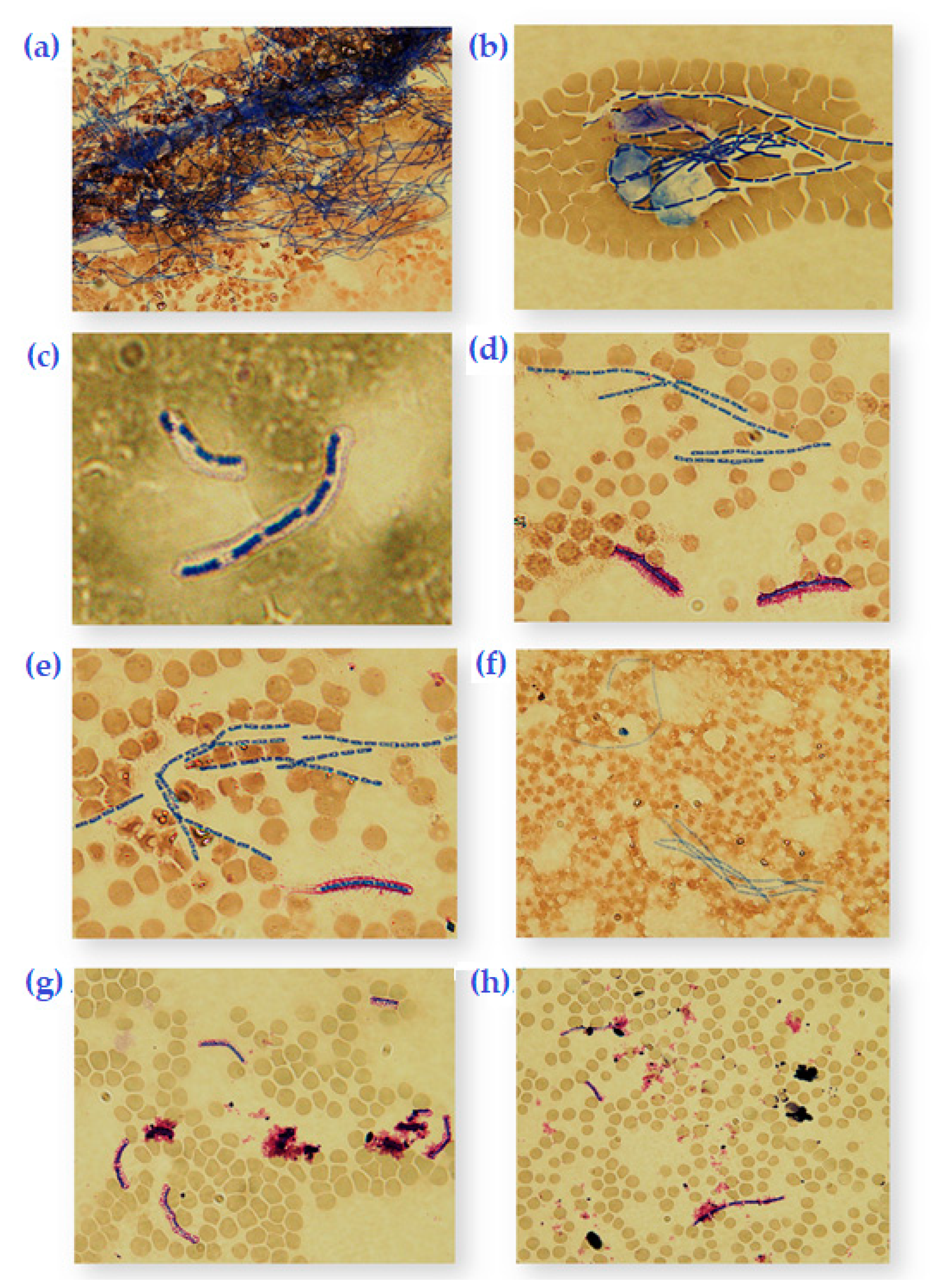

© 2020 by the authors. Licensee MDPI, Basel, Switzerland. This article is an open access article distributed under the terms and conditions of the Creative Commons Attribution (CC BY) license (http://creativecommons.org/licenses/by/4.0/).
Share and Cite
Hassim, A.; Lekota, K.E.; van Dyk, D.S.; Dekker, E.H.; van Heerden, H. A Unique Isolation of a Lytic Bacteriophage Infected Bacillus anthracis Isolate from Pafuri, South Africa. Microorganisms 2020, 8, 932. https://doi.org/10.3390/microorganisms8060932
Hassim A, Lekota KE, van Dyk DS, Dekker EH, van Heerden H. A Unique Isolation of a Lytic Bacteriophage Infected Bacillus anthracis Isolate from Pafuri, South Africa. Microorganisms. 2020; 8(6):932. https://doi.org/10.3390/microorganisms8060932
Chicago/Turabian StyleHassim, Ayesha, Kgaugelo Edward Lekota, David Schalk van Dyk, Edgar Henry Dekker, and Henriette van Heerden. 2020. "A Unique Isolation of a Lytic Bacteriophage Infected Bacillus anthracis Isolate from Pafuri, South Africa" Microorganisms 8, no. 6: 932. https://doi.org/10.3390/microorganisms8060932
APA StyleHassim, A., Lekota, K. E., van Dyk, D. S., Dekker, E. H., & van Heerden, H. (2020). A Unique Isolation of a Lytic Bacteriophage Infected Bacillus anthracis Isolate from Pafuri, South Africa. Microorganisms, 8(6), 932. https://doi.org/10.3390/microorganisms8060932





